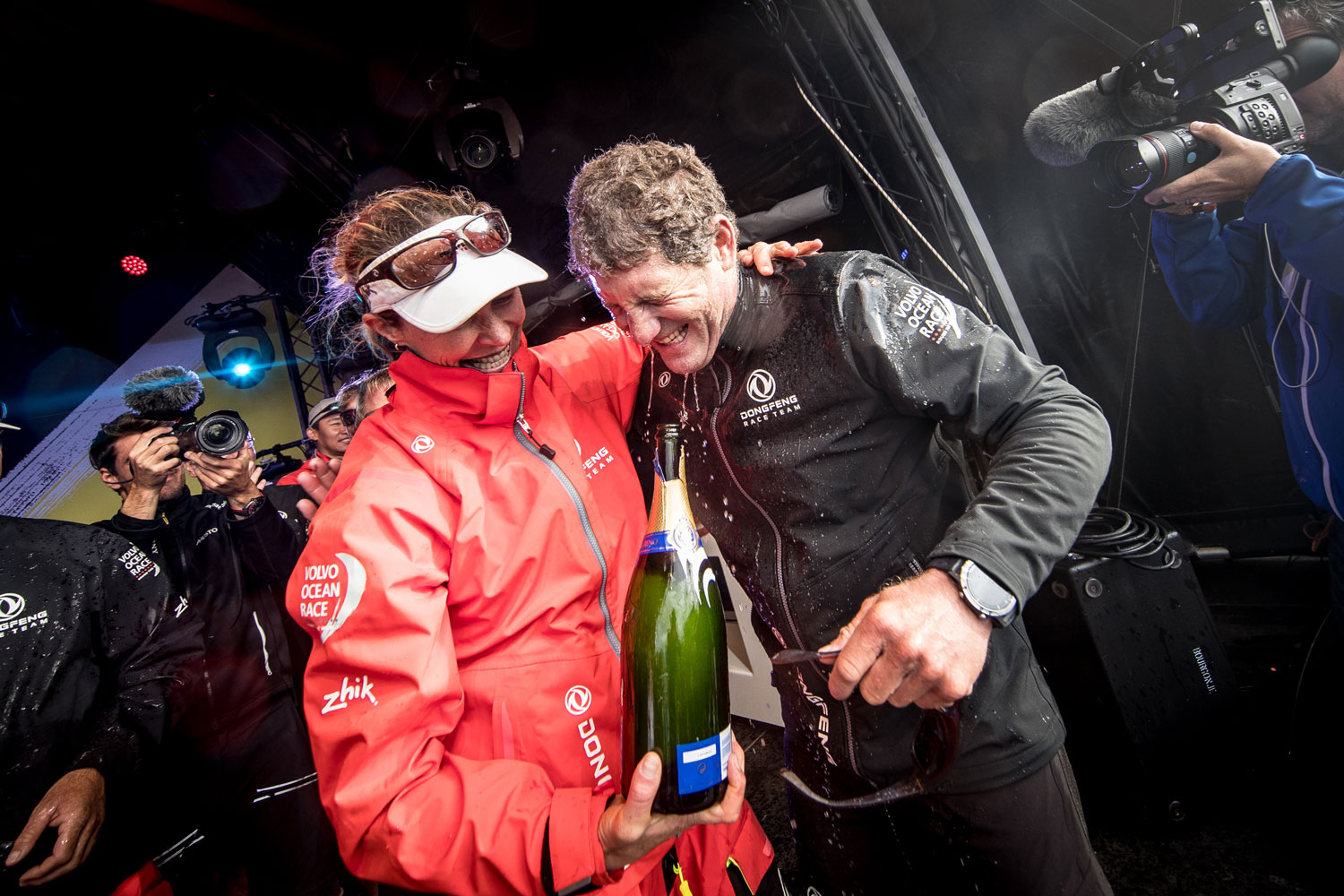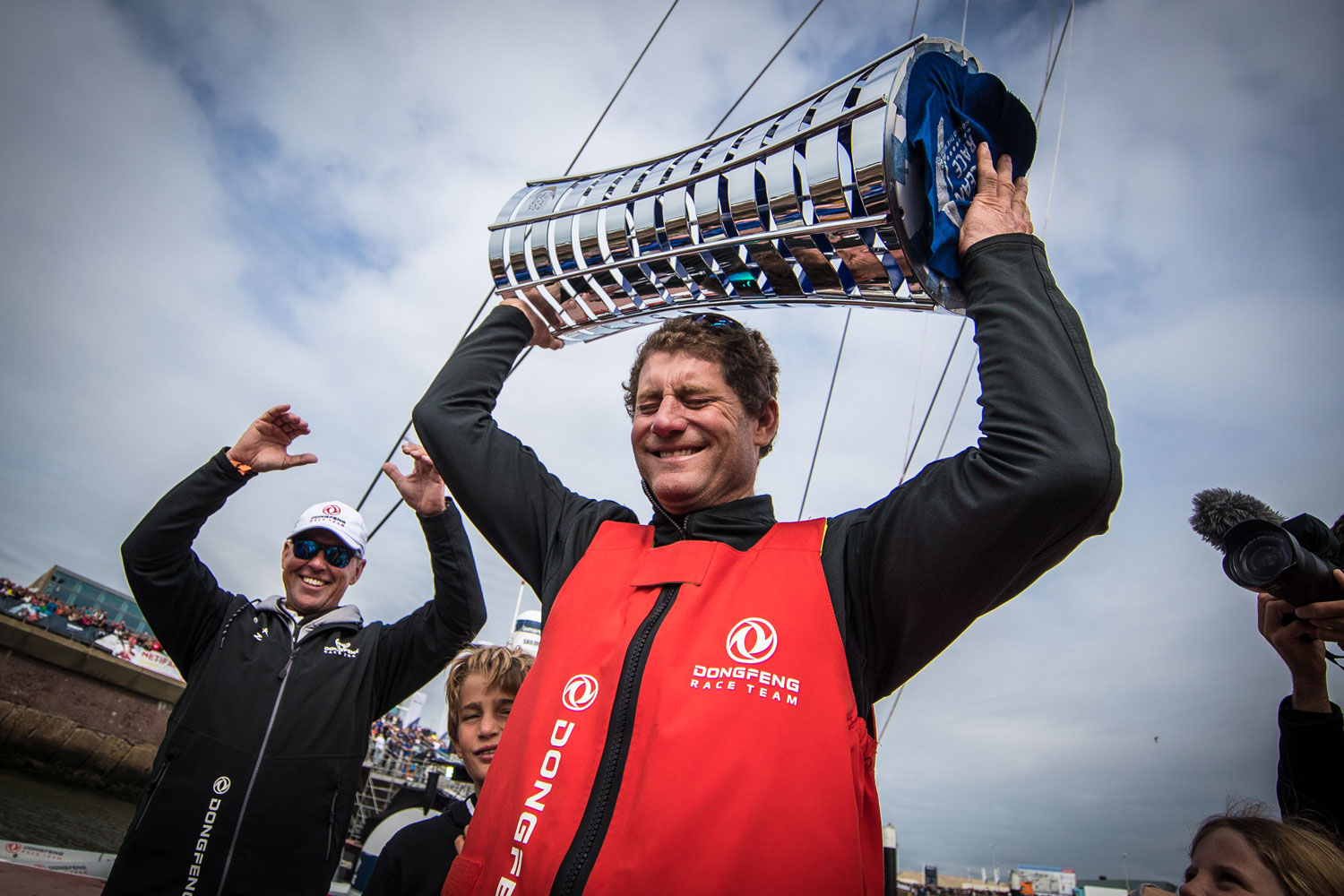Road to success
Dongfeng Race Team’s last gasp victory in the 2017-18 Volvo Ocean Race was built on prudent boat management, and an important psychological turning point.
Photography by Eloi Stichelbaut
28 June 2018
Advertisement
The celebrations during those first precious minutes after Dongfeng docked in The Hague were very special as Charles Caudrelier and his crew, both on the boat and on shore, washed away months of frustration, stress and worry and revelled in their moment of glory.
There were hugs, tears, smiles and cheers as the giant Volvo Ocean Race trophy was handed from one sailor to the other and held aloft; there were flowers and champagne and very quickly Dongfeng’s decks were heaving with husbands and wives, children, shore crew and other friends of this happy team.
It was perhaps Jack Bouttell, Dongfeng’s Australian bowman, who summed it best when he said that in the instant that the Chinese-flagged Volvo Ocean 65 crossed the line, all the agonies of the last eight months just vanished. Suddenly it came into sharp focus that this campaign had finally delivered what it had promised for so long.
Of course, this was a special celebration not just because the team had won sailing’s most elite fully-crewed offshore ocean race, but also because Dongfeng Race Team had finally won a leg. For months Charles and Pascal and their fellow sailors had watched others celebrate at the end of legs and now it was their turn.
Advertisement
On the foredeck, taking it all in, Bruno Dubois, the Team Director who has masterminded this second successive entry by Dongfeng Motor Corporation in the Volvo Ocean Race, was joking that maybe this was all a dream and he would wake up and discover someone else had won. But in reality, Dubois always knew that his crew would never give up until the last mile of the last leg. Winning was always the plan.
Observers of this team from close-up and from afar during this long race, is that is it was a very tight-knit unit that never allowed its collective head to go down. Charles and Bruno had selected compatible people who could race hard, endure horrendous conditions for weeks on end and suffer big disappointments yet not allow any of that to defeat them.
They may have been over-cautious at times but they established a mode of sailing that struck the right balance between speed and stress on the boat – Dongfeng suffered almost no serious damage in 45,000 miles of battle, save for a keel issue on Leg 3.
Bruno himself identifies the Auckland stopover as a turning point. By that stage in the race the team was pretty exhausted after the tough tropical legs from Melbourne to Hong Kong and then back down to New Zealand. But during that stopover the sailors got plenty of rest, had time with their families and then got together for some team building sessions when they relaxed together.
For example, on a visit to Waiheke Island – and this proved hugely beneficial in re-defining the crew’s competitive edge. Bruno told them at that stage that the rest of the race was either going to be the “road to hell” or the “land of opportunity” and they chose to view it as the latter.
Listening to the dockside interviews it was clear that the toughest moment of the entire race was that horrible finish into Newport, Rhode Island at the end of Leg 8, after Dongfeng had sailed an excellent leg from Itajai in Brazil.
With 15 miles to go to the finish she was leading. By the time she eventually crossed the line, having drifted in windless conditions and strong tide in the dark, she was fourth. It was a body blow that would have sunk others, yet somehow Charles and his crew got back up and returned to fight on.
The cheers that rolled along the dock when the boat pulled in, have been reflected in the stream of congratulations still coming including Zhik, which provided by all accounts technically exceptional gear for both Dongfeng Race Team and Team AkzoNobel.
Taking on both projects meant an intense period for Zhik’s design and development team, led by Global Head of Design, Bart Milczarczyk, who quickly understood the teams’ specific requirements. Even though time was short, they already had some radical new concepts on the design board to put to test, and the Volvo Ocean Race proved the catalyst and opportunity.
Key innovations resulting from the race include Zhik’s Isotak X Ocean Smock with a unique ‘adaptive’ zip-on/zip-off hood and collar, clear protective face-visors and various zip-on balaclavas. For the teams this meant carrying one versatile smock for different climates and conditions, and reducing weight on board.
Sails will be in contact with Zhik to see whether the VOR gear tweaks will be coming ‘down the pipe’ to its regular offshore range.
Perhaps the best indication of the collective character of the Dongfeng program came as MAPFRE came in to tie up. Many of Dongfeng’s crew took time to welcome them in, clapping them as they did so – a final gesture of the sort of good sportsmanship that characterised the way Dongfeng approached this campaign from the start.
Advertisement
Advertisement
Advertisement




